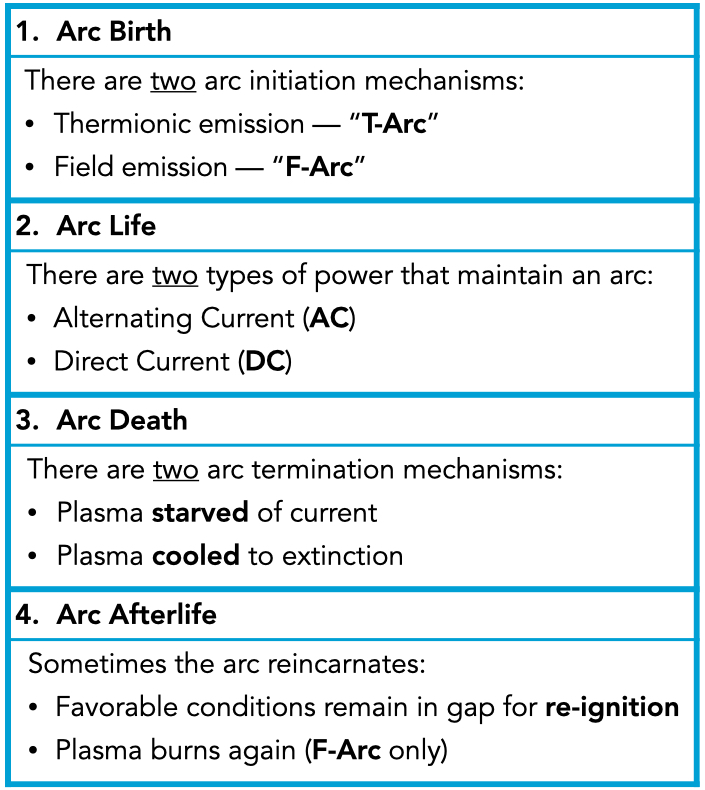The Arc Species “Zoo”
Arcs are self-feeding, plasma-burning monsters! … (sparks are not) …
An “arc” is a man-made “arc-discharge phenomena” in which burning plasma is maintained by a permanent AC or DC power source. All arcs are “contact arcs” created when connecting or disconnecting power (intentionally or unintentionally).
Every arc follows the same life-cycle of:
1. Initiation,
2. Plasma, and
3. Dissipation; and occasionally
4. Re-Initiation.
(Note that “sparks” and “arcs” are not the same … sparks, whether a small electrostatic shock or a bolt of lightning, are only initiated by field emissions and are briefly supported by a transient power supply.)
There are a vast number of different arc “animal names” due to arcs being named as they were observed across different applications and industries during the industrialization of electricity. This is similar, however, to the names of “Puma,” “Mountain Lion,” and “Cougar” being given to the same big cat species depending on where and by whom it was first encountered. Further complicating the understanding of arcs is the frequent association with “sparks,” which do not occur within the power contact cycle!

We differentiate “arc species” by their respective arc initiation. After 10 years of industrial research, we grew to understand that there are only three basic “species,” despite the apparent “zoo” of innumerable arc “names”.

Arcs are either T-Arcs or F-Arcs between two electrodes and are supported by a continuous supply of power.
Why is this important? Because the large number of “animal names” in the Arc Species Zoo (often combined with a conflation of arcs and sparks; which are NOT the same) have resulted in confusion.
This confusion has led engineers, designers, and tech-nicians to employ inadequate or inappropriate arc suppression counter-mechanisms in an attempt to sup-press contact arcing. For example, “snubbers” do not suppress any of the various arcs that occur during normal relay or contactor operation (“snubbers” are for “sparks”).
We hope that our findings, which are based on 10 years of industrial research, can help industry better under-stand the problems associated with arcing … and how to implement better solutions to solve these problems.

